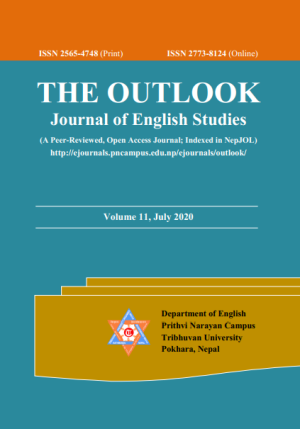The Application of Hasya Rasa in Shakespeare’s “My Mistress’ Eyes are Nothing Like the Sun” and Marvell’s “To His Coy Mistress”
DOI:
https://doi.org/10.3126/ojes.v11i0.36361Keywords:
Rasa, hasya rasa, sthayibhava, vibhava, anubhava, vyabhicharibhavaAbstract
Literature like poetry has aesthetic value along with social value. The expression of emotion is the power of literature that enthralls readers; readers enjoy texts experiencing rasa. This paper aims to analyze Shakespeare’s “My Mistress’ Eyes are Nothing Like the Sun” and Marvell’s “To His Coy Mistress” from the perspective of the rasa theory, i.e. an Eastern aesthetic theory. The poems randomly selected expose hasya rasa experience. The poets exploit hasya rasa to disseminate and propagate pleasure as well idea, thought, like erotic love, frivolous; the experience of hasya rasa is a uniqueness that enthralls readers to read the poems again. The expression and realization of rasa constitute the aesthetic value and power of the poems. The poems selected here demonstrate that the formal and serious poems can be amusing, chucklesome. Although the realization level of hasya rasa may vary from individual to individual as their academic, professional, social status, and age, there is hasya rasa experience in the poems.
Downloads
Downloads
Published
How to Cite
Issue
Section
License
This license enables reusers to distribute, remix, adapt, and build upon the material in any medium or format for noncommercial purposes only, and only so long as attribution is given to the creator.

